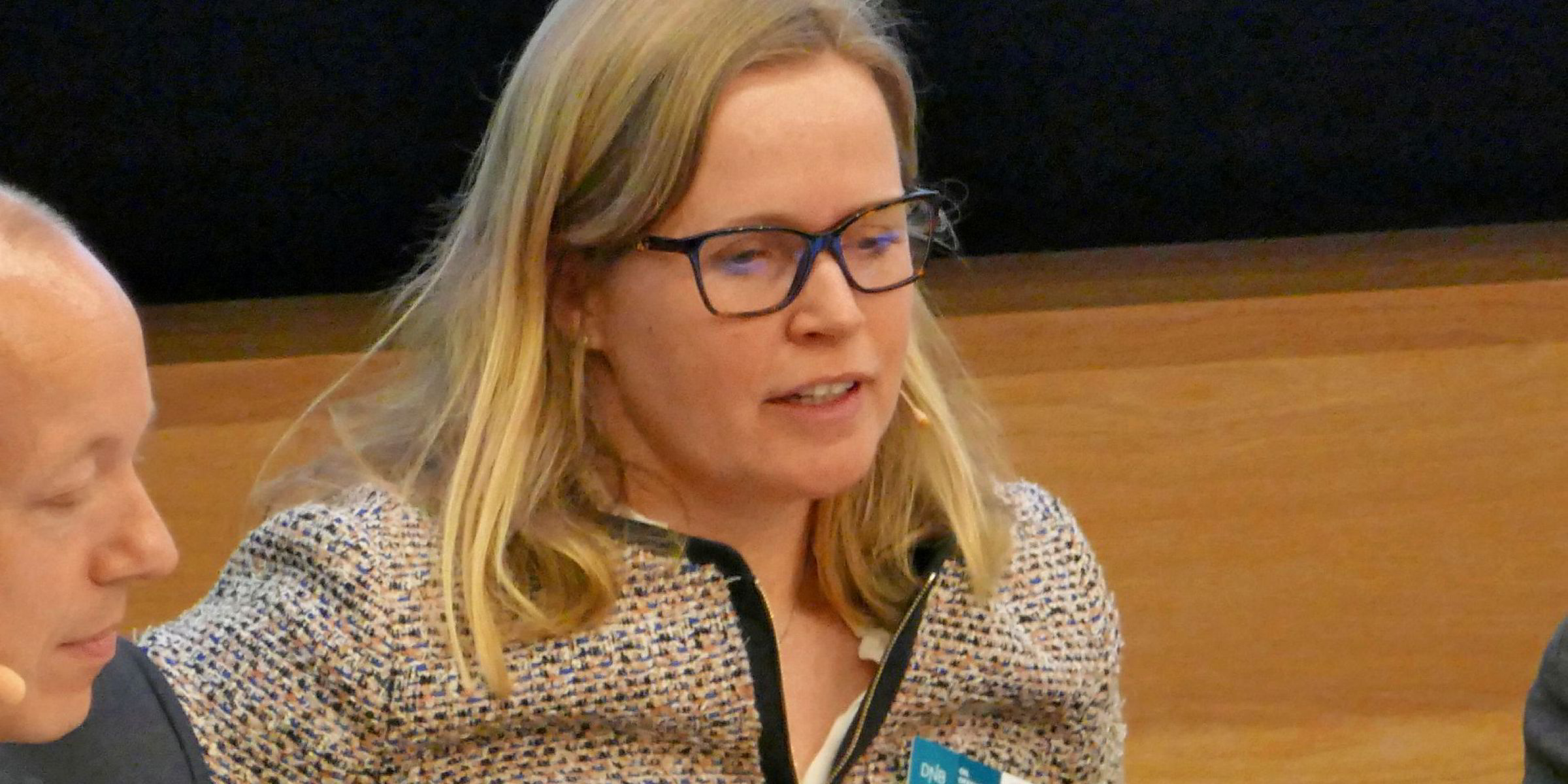Secondhand bulker prices have risen 50% over the past two years and could rise further, according to eight well-known shipowners at DNB’s conference in Oslo today.
Among the eight owners on DNB’ dry bulk panel, Songa Bulk chief executive Herman Billung was the only one willing to take a punt on an actual percentage.
Ever-bullish Billung predicted up to a 30% rise.
The panellists all agreed that dry sector is well past its previous trough but they also see more upside in store for bulk carriers.
Moderator Nicolay Dyvik of DNB Markets compared today’s upswing with the 1986 asset cycle in the dry bulk, which partly mirrors secondhand prices since 2016 in terms of the shape of the curve.
In the 1986 cycle, which lasted for more than three years, prices for five-year-old capesize vessels rose by more than 150%.
Today’s market has seen comparable values rising by 50% so far, which has been relatively fast over the past 12 months, Dyvik said, while this cycle has lasted two years.
Prices capped in this cycle
“My view is that there’s more upside on secondhand prices. Asset values have been lagging a little bit compared to where the stock market is,” Norden chief executive Jan Rindbo told the conference.
“I do believe there is a bit of a cap on secondhand prices in relation to newbuilding prices.”
Because of this cap, Rindbo added, secondhand prices will not rise nearly as much as they did in the 1986 cycle, at 150%.
“It’s a hard call to make,” Billung said.
“It correlates 95% with the period market. I think prices should have another 20% to 35% percent from where we are today, in upside potential.”

As rates go up and as banks come back to allow the financing of purchases, asset prices should rise, Genco Shipping chief executive John Wobensmith said.
“One of the interesting things right now is that we haven’t really seen capesize values move, which makes a very compelling area to still have investment opportunities, Wobensmith said.
"The return-on-capital numbers looking forward to the second half this year are pretty attractive."
“As freight rates move up, as Herman said about that high correlation, you will start to really see secondhand values finally start to move up after a relatively flat period over the last six months.”
2020 vision on newbuilding prices
Relating to Rindbo’s comment that low newbuilding prices will serve as cap on rising secondhand prices, 2020 Bulkers chairman Magnus Halvorsen pointed to how much yard capacity has been removed from the market.
“Not only for dry bulk but, generally, we are very bullish newbuilding prices,” Halvorsen said.
“The shipbuilding industry, just like the shipping industry, is highly cyclical and, obviously, the capacity that has been taken out of the market will eventually come back.
"Right now, there has been a serious hit to the yard industry.”
“I think if you look at 2017, there were about 70% fewer yards taking any orders, at all, than in 2007 at the peak.”
Halvorsen referred to 2020 Bulkers’ eight-ship newbuilding order last year and highly favourable terms from yards at the time, illustrating Rindbo’s point.
“We obviously looked at secondhand, as well, but when you can put $10m down to get $350m of asset exposure, that made it for us,” he said.

Golden history lesson
Golden Ocean chief executive Birgitte Ringstad Vartdal offered a counter view of Halvorsen’s take.
“I was in primary school in 1986 [during that cycle] but I would guess the yard capacity was much smaller at the time,” Vartdal said.
“I don’t think you will see the same uplift. As Magnus said, yard capacity has been taken down, but there is plenty of capacity to build dry bulk assets and it is not only dry bulk at the yards. It's also other segments.”
“So, I think, that will sort of limit this. There is upside to the yard prices and also upside to the secondhand prices but to get up to a 150% increase is unrealistic.”
Pacific Basin chief financial officer Peter Schulz said that the current economics of running on the smaller bulkers sizes make them “very favourable” for purchases rather than orders.
“We are not yet at rate levels where taking a newbuild position makes sense and then, if you add in all the uncertainty about regulation, I don’t think there will be a rush to the yards for the smaller segments,” Schulz said.
“That will have an impact on newbuilds prices, which will also have an impact on secondhand prices for the smaller vessels. I think we might see some upside on the secondhand market but probably muted.”







